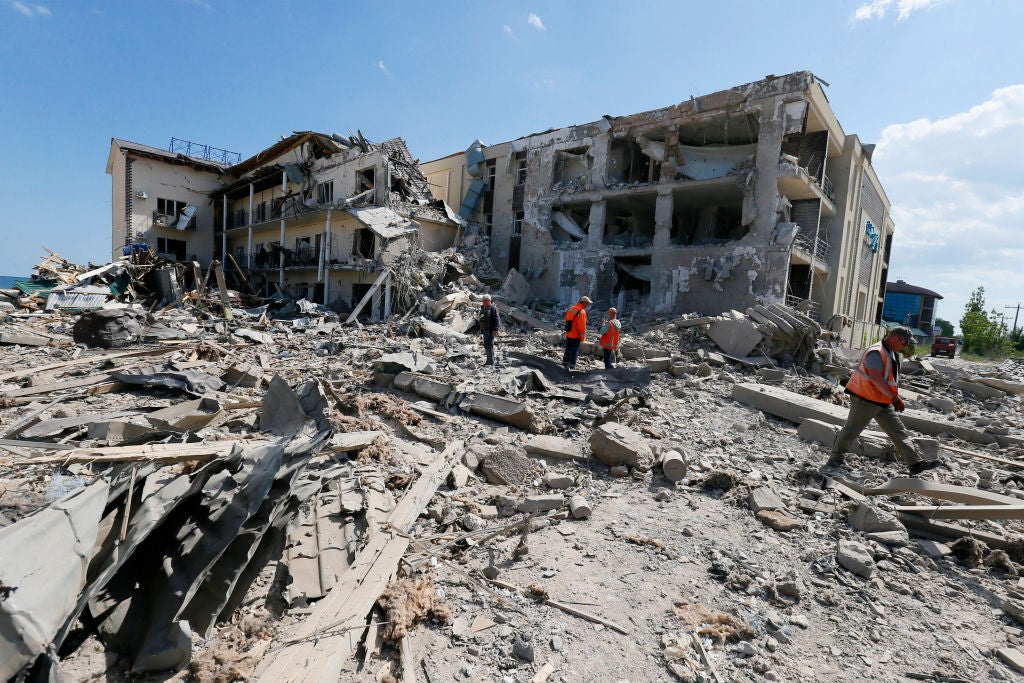Lawrence Freedman

From the beginning of the war in Ukraine there have been concerns about confining it to two belligerents within defined geographical boundaries. The concern most often expressed is if Vladimir Putin, having seen his ambitions thwarted and with his forces on the run, lashes out in anger with nuclear weapons.
While no one dares to rule out an act of supreme irrationality, as I have argued here and here, nuclear weapon use would not solve any strategic problems for Russia. It would create many more. Nor has there been any indication that Putin is actually thinking along these lines: he is not even prepared to escalate by acknowledging that he is actually fighting a war and not just a limited “special operation”. Reservists have been signed up for the war in an almost covert fashion rather than through full mobilisation. Putin set a “red line” at the start of hostilities by demanding that Nato countries hold back from direct intervention in the war, and thus far this has been respected. For now, Nato is making an impact simply by keeping Ukraine economically afloat and militarily buoyant.
There is, however, another aspect to this war that has received insufficient attention – though it is now coming into focus – where pressure could build for a Nato operation: the need to relieve the blockade that Russia has successfully inflicted on Ukraine’s southern ports in the Black Sea. This is urgent not only because of the effect on Ukraine’s battered economy, but also because of its effect on supplies of essential agricultural products to the rest of the world. If Russian forces continue to be pushed back, and as the diplomacy to bring the war to a conclusion is stepped up, this critical issue will need to be addressed – possibly linked to Russian demands for relief from sanctions. If it is not, there could be demands on the major maritime powers to mount freedom-of-navigation operations to break the blockade.
Before considering the war at sea, we need to remind ourselves about the state of the war on land – for each influences the other. The end of the conflict’s second phase is approaching. In late March, Russia sharply changed its focus of operations away from the first phase – in which it sought to gain control of all Ukraine, particularly Kyiv – and towards the Donbas, the region that provided the Russians their pretext for war, and where they had made early gains. For this second phase they would exploit an apparently strong position to encircle and eliminate the main body of Ukrainian forces based in the region (its Joint Forces), and so complete the occupation of a defined and defensible chunk of Ukrainian territory. This territory was already being prepared for eventual incorporation into Russia’s administration, language, currency, education and so on.
This effort has failed. While Russian forces are continuing to make probing offensives, they have largely been blocked. The campaign map does not look much different from a month ago. Nato’s secretary general Jens Stoltenberg has said that Ukraine “can win this war”, while the UK’s defence intelligence, having noted that the Russian army has lost a remarkable third of its original ground combat force, observed that it was now “significantly behind schedule”. This is a story of shrinking objectives. When the second phase started, analysts pointed to Dnipro as a likely objective. Then the focus was on Slovyansk, and now it is Severodonetsk, the Luhansk Oblast’s second-largest city, much closer to the main body of Russian forces. The main aspiration may be to complete the occupation up to the administrative borders of the oblast, even though they may not be able to do the same for Donetsk.
This is turning into a major battle, and costly for both sides. There is already fighting on the outskirts of Severodonetsk. The Ukrainians have blown up a bridge connecting it to Rubizhne, which Russia holds. Russian forces tried to get across the Siversky Donets river on 11 May, but they suffered a major setback when a tactically inept crossing was caught by the Ukrainians. This led to a reported 485 soldiers (out of 550) being killed or wounded and the destruction of 80 items of equipment.
Even if Russian forces take Severodonetsk, confirming their hold over Luhansk, their limited capacity to conduct major manoeuvres would still lead them to adopt a more defensive posture. The most significant development in recent days (other than the inevitable but much delayed end of the resistance in Mariupol) has been Russia’s retreat from positions around Kharkiv, a city that has suffered under terrible Russian bombardment. This is generating new options for the Ukrainians, including the possibility of enveloping Russian troops. Meanwhile Ukrainian forces have been making slow but steady progress, picking away at Russian positions close to Kherson, a city that the Russians were able to take without much of a fight early in the war.
No comments:
Post a Comment